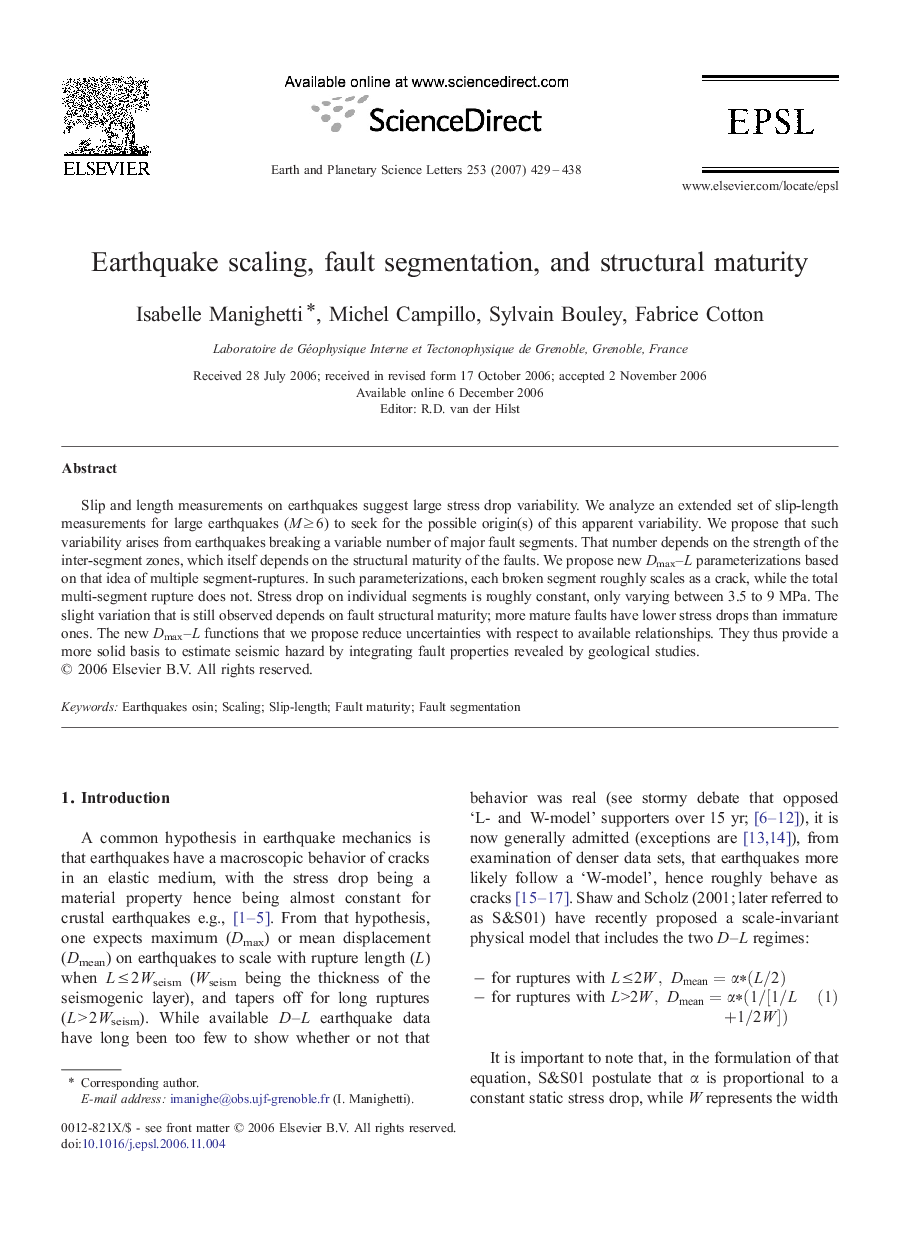| Article ID | Journal | Published Year | Pages | File Type |
|---|---|---|---|---|
| 4680550 | Earth and Planetary Science Letters | 2007 | 10 Pages |
Slip and length measurements on earthquakes suggest large stress drop variability. We analyze an extended set of slip-length measurements for large earthquakes (M ≥ 6) to seek for the possible origin(s) of this apparent variability. We propose that such variability arises from earthquakes breaking a variable number of major fault segments. That number depends on the strength of the inter-segment zones, which itself depends on the structural maturity of the faults. We propose new Dmax–L parameterizations based on that idea of multiple segment-ruptures. In such parameterizations, each broken segment roughly scales as a crack, while the total multi-segment rupture does not. Stress drop on individual segments is roughly constant, only varying between 3.5 to 9 MPa. The slight variation that is still observed depends on fault structural maturity; more mature faults have lower stress drops than immature ones. The new Dmax–L functions that we propose reduce uncertainties with respect to available relationships. They thus provide a more solid basis to estimate seismic hazard by integrating fault properties revealed by geological studies.
